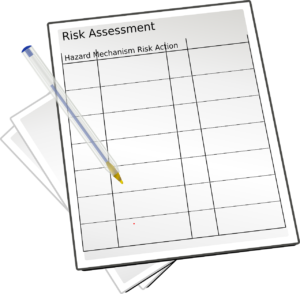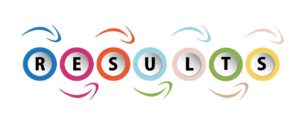Slicing, Dicing, and Divvying Up Data!
As a safety professional, mixing and matching data to view how metrics tie into each other is always so interesting! Benchmarking and comparing to other industries is also really helpful to begin assessing where your safety program currently is.
After reading The Definitive Guide to Leading Indicators by eCompliance, I reflected on how I could use the data I currently have to best represent my facility’s safety culture. Currently banked information include historical OSHA Logs, first aid, property damage and near miss incidents.
The Safety Climb by Corey Martin left me with another stimulating idea to consider. I find it very exciting to begin placing metrics behind why decisions are made, along with showcasing current progress. A major point Corey stresses with the metrics are that they need to be placed in proper context. Corey states, “it’s important to put these metrics into context and continue to focus on communication, engagement, and improvement, rather than any single metric.”
Metrics and indicators should be viewed as a way of communicating, engaging and enhancing where the current program is at. Depending on what stage a company’s safety program is at, it should determine what metrics to show in order to drive the safety initiative towards the next goal.

The Process to Transparency
Information and metrics make a program pop. Me personally, the more knowledge I learn about something I value, the more excited I get knowing I play a role in making the company a success.
Communicating information to employees whether it be safety, quality or production, is critical to show and communicate the role they play on a daily basis to make the business a successful operation.
Reactive to Proactive
There are several metrics which sound appealing to trial out for a facility, but it is critical to keep in mind how mature a safety program is.
For an example, imagine if I were to adopt advanced Key Performance Indicators (KPIs) such as employee behavioral observations. Behavioral observations are an extremely beneficial metric, although, if the facility was only at the stage of identifying applicaple regulatory requirements, that KPI would not be supporting current goals.
Nonetheless, I do aspire to drive a program from beginner to advanced. Along the process of program advancement, KPIs change to mirror what the program would like to highlight, such as progress towards objective and targets. KPIs which inspire me when safety comes to mind include:
- Behavioral Based Safety
- Audits
- Inspections
- Employee suggestions
- Near misses
- Hazard Assessments

Displaying this proactive information is a lot more productive than a list of injury statistics. It is important to know where a company is compared to industry peers, but it shouldn’t be the central metric shared across a company. Some other metrics I have researched and are impressive options to me include:
- Safety meetings completed
- Employees trained
- Training hours(per employee, per site, per time frame)
- Proactive risk or hazard identifications recorded
- Positive safety acknowledgements given to team
- People trained in hazard identification
- Completed Toolbox Talks
- Recognition for safe behavior
- Repeat findings
- Assessments to evaluate potential severity
- Assessments deemed unacceptable to EHS Representative
- Average number of days to completion on corrective/preventative action
- Correlation between top leading and lagging indicators
- Percent staff who believe safety is a priority for management
Most of these KPIs absolutely fall under a matured safety program and can be developed once compliance is achieved. Over time, metrics play a role in communicating accomplishments to employees and show the company’s dedication to safety success.
The Perfect Safety Day
I read a comment from a safety professional online and it definitely inspired me. The comment they wrote ties into leading indicators nicely but with a different touch…They go on to state:
“I recently visited a company which their main metrics are “perfect days.” They have a breakdown of what a perfect day includes, counting all the positive things they do from safety chats, PPE, safety devices inspections, lockout tagouts, etc, and discounting any incidents or near misses. That gives them a “perfect day” number they use as a benchmark.”
Using all these wins as an overall metric is amazing! One thing I believe can be looked at from a different perspective is utilizing near misses. I don’t think they are considered perfect, but the fact people are reporting them can be considered perfect actions.
Ultimately, comparing near misses to incidents is another incredible leading indicator to express to employees. It is a wonderful initiative closing out hazardous situations before they become an incident.
Numerous Wins Accomplished
When I was just beginning to learn about safety management and safety culture, I didn’t fully realize the extent to what can be obtained by having a terrific safety program.
Through addressing reactive, and ultimately (the goal) proactive data, employees feel empowered, motivated, productive, like their feedback makes a difference and they are contributing from the bottom-line to improve the organization.
It takes time to bring a program to the point of having safety as core value which is involved in all company decisions. It is natural to be resistant to change and have the mindset things are fine the way they have been. Things can always be improved and being openminded to the entire process of change is freeing.
Direct and indirect advantages which cross my mind when closing out corrective actions:
- Preventing an injury
- Saving money
- Medical visits
- Production time lost
- First Aid
- Worker’s Compensation
- Hiring/Training another individual to cover the area
- OSHA fines
- Increased employee moral and engagement
- A visual commitment that even though productivity is extremely important, safety and health of employees is the right of way to operational success
- Improving quality and productivity

Fulfill Your Win
There are so many beneficial reasons to begin changing the way metrics are viewed. Lagging indicators are the ‘traditional’ metric to use because they are easily calculated; they already need to be calculated for proper submission of OSHA documentation. It takes time, effort, creativity and teamwork to go above and beyond minimum requirements.
When focusing on the positive indicators and outlining hazard potentials before the incidents occur, a company is in a great position to gain all of the safety wins listed above. Another thing I love about safety management is when you touch the hazard points and take the time to mitigate exposures, the culture of the facility changes and paves a way for a new attitude which impacts all facets of the business.
Conclusion
Identify where your safety program currently is, develop leading indicators to fit your current program goals, communicate with your employees the story behind metrics. Identify and mitigate hazards to trudge the culture forward!
I am highly passionate about advancing safety programs and using leading indicators… so please reach out to me and or comment on this post to offer your feedback, takeaway or where your program is currently at!
Best,

References
- eCompliance. “Definitive Guide to Leading Indicators.” eCompliance Management Solutions Inc. eCompliance Management Solutions Inc. 2020. compliance.com/health-and-safety-software. Date Accessed 1/27/2020.
- Martin, Corey. “The Safety Climb.” Spotlight Safety Inc. Spotlight Safety Inc., 2019. www.spotlightsafety.com. Date Accessed 1/31/2020.

